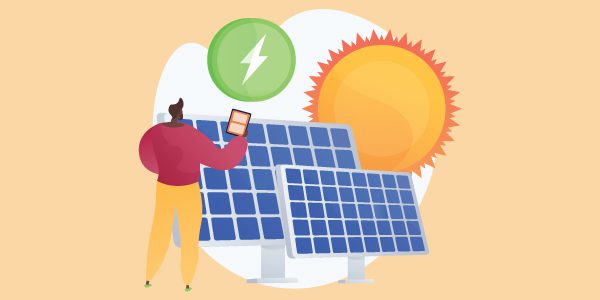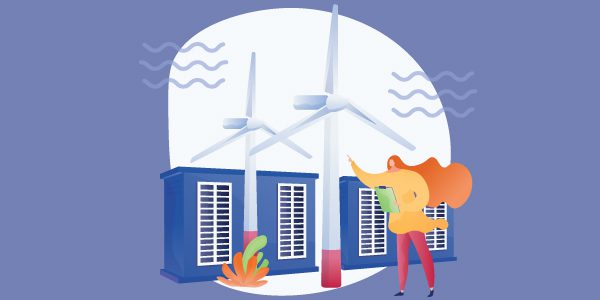2022 was a big year for the renewable energy sphere.
In September, the International Energy Agency officially announced that there are more people working in renewable energy than in fossil fuels. Nearly 40 million people are working towards a greener and cleaner future for us all!
But what if we told you that globally, women only make up 32% of that? While we’ve certainly made epic strides into building a green future, we’re only taking half the population with us.
Women In The Renewable Energy Industry
Just like other industries, we are experiencing a talent crisis. In fact, at the moment, it’s becoming a “rob Peter to pay Paul” situation. Headhunting, or “poaching,” is occurring across the industry, and we’re just going in cycles. We’re not gaining talent, we’re just moving them around, which is not sustainable.
It’s hard to find qualified candidates that are suitable for certain roles, so you find yourself looking at other companies, which is not an ideal situation. We need more talent but to do that we need to ensure that our industry is where women can thrive and grow into.
While the percentage of women in the renewable energy sector globally is higher than the energy sector overall (32% compared to 22%), with women making up 47% of the workforce, it’s certainly not as good as it could and should be. Australia fares better, with 39% of the clean energy workforce being made up of women.
There’s also a large shortage in highly technical roles. We need STEM candidates; however, for many women, they might have a passion for STEM but either don’t pursue it or leave the industry. In fact, a disheartening 83% of women leave their STEM careers.
Another study found that two of the most significant reasons for leaving were a lack of leadership pathways and promotion opportunities. For STEM roles in the industry, worldwide women make up 28%; in Australia, it’s 31%. However, the proportion is significantly lower than those in administrative roles, at 45% and 62%, respectively.
For those at the top in Australia, women are a rarity, with only 19% of board positions being held by women in the clean energy industry, a stark contrast to the 34.2% of women on ASX 200 Boards. The International Energy Agency in a study found that globally, women make up only 10.8% of senior management positions in renewable energy firms.
Our industry needs to be attractive and be seen as a viable career path for women. We can do that by raising brand awareness. To take a leaf out of marketing’s book, you need to approach it like a top-of-the-funnel strategy. Early on, raise brand (or rather, industry) awareness. This is why it’s crucial to provide programs and for companies to reach out to primary and high schools to start those connections and perceptions early on.
How Can We Get More Women In Renewable Energy?
Awareness
Unfortunately, increasing the number of women in renewable energy does not have a one-size-fits-all solution. In saying that, awareness is a huge issue. What many people aren’t aware of is that there are numerous job opportunities available in the sector. It’s not just trade-focused and it’s not just rural-based. Women from all locations and backgrounds whether they have a history in trades or in an office, can join the industry. So many people picture the renewable energy job site as being a utility-scale solar farm in rural areas, and while that’s of course a part of it, it’s not everything.
We have so many professional services and development job opportunities here, too. Many roles are actually based at headquarters rather than in the field. As Australia is less research-based and more about distribution, installation, and maintenance, there’s also a big need for sales, marketing, and regional management professionals. So we need to emphasise that the renewable energy sector is not just for trades-qualified women.
We also need to target young people.
Planting the seed early on is key. If young girls can’t see themselves with a job in renewable energy, it’s up to companies and the industry as a whole to show that women can have a future in clean energy and it’s not just a “boy’s job”. We believe it’s crucial to have women come out of these companies and meet students at school. They can talk about what they do, how they do it, and demonstrate how this job is not just about the construction of solar or wind farms, there’s so much more to it.
Excursions are also important to offer! Being able to show students what it’s like to work in clean energy can be an influential factor. While excursions to rural areas to see clean energy farms in action, for instance, are quite difficult and not really possible for many schools that are located in metropolitan areas, there are still quite a few big rooftop solar projects that could be interesting to students. However, this only works with companies reaching out to schools.
Additionally, for the later years of high school, the industry should be collaborating closely with high school career advisors. High schools regularly offer career talk opportunities for senior students, especially with alumni. So having a conversation with your employees and encouraging and supporting them to go out and talk about their careers might be a good idea. Essentially, it’s all about outreach.
Furthermore, this outreach can start well before high school; raising awareness for children in the latter years of primary school should also be done, especially with STEM. Offering and advertising STEM programs is crucial to helping young women grow into technical roles and to giving them the confidence to pursue them!
What’s great is that the federal government is focusing more on reaching young girls about STEM. Future You, an Australian government initiative and Women in STEM ambassador, offers invaluable tips and inspiration to girls aged 8–12 by offering career pathways and showcasing role models across STEM. These are all great steps to not only diversifying our workforce but also giving young girls the opportunity to explore and feel comfortable pursuing STEM in their later life.
Conferences & Industry Initiatives
Conferences are a great way to connect with like-minded individuals and learn about new developments in the industry. There are many conferences that are general and more women-focused. For example, there’s events like the Women In Renewables Luncheon that discuss opportunities and challenges for gender equity in the industry.
However, conference design is important. It’s crucial to have gender-balanced panels. Besides the fact that a diverse pool of voices leads to better discussions (as there are more viewpoints and experiences), it’s also critical to female participation.
A study has found that having women in a chair position at a conference increases female participation (based on the frequency of asking questions). They found an 11% increase of questions asked by women. Also, we must be sure to not fall into the trap of having “gendered” topics, i.e., soft skills and gender equality for women panels. These are topics for everyone! Gender equality will only happen with men and women working together!
Initiatives are also great. We’re lucky in Australia to have many of them backed or created by the Clean Energy Council, who has become a fantastic advocate for increasing women in renewable energy. There’s a mentoring program and a “careers launcher ticket” initiative (where member companies sponsor a student or recent graduate to attend one of the council’s major conferences).
They also offer two sponsorships for women already in the industry: the AICD Scholarship and the Chloe Munro Scholarship for Transformational Leadership. It’s important to recognise that these initiatives don’t just have to be for helping women enter the industry but also for supporting them once they’re there. Retention is just as important.
Gender Diversity Metrics and Targets
Having gender diversity metrics and targets play a key role in increasing the number of women in the sector. These goals should be audacious. Deliberate action is key. If you don’t have targets and metrics in place, how can you ensure that your company is doing everything it can to increase diversity amongst your ranks? It’s so important to have representation at all levels of your organisation.
In saying that, you cannot just set a quota and hope for the best. You need to make your company the best place for women to thrive. You should conduct an analysis of your company and consider what trainings, initiatives, flexibility, and barriers that could be preventing women from advancing in your company. You should also consider looking at turnover and other invaluable data from your HR team, they can help you pinpoint issues in your company. Doing this first will help you significantly in understanding what qualities your company has (or needs to have) to attract and retain women workers.
In Australia, only 19% of board positions are held by women in the clean energy workforce. Women want to see themselves in leadership, whether it be a manager or on an executive level. Mckinsey & Company identified a “broken rung” that prevents women from advancing to managerial positions. It was found that for every 100 men, only 87 white women and 82 women of colour are promoted to a first-level manager.
If women can’t see themselves having a future in your company or broadly, industry – they will go elsewhere. The good news is though, companies are trying. In our experience, our clients are actively seeking women candidates and some specifically request for a shortlist of women talent. These are great steps to increasing gender equality which we so need in our industry.
Our industry needs to diversify. Gender equality is not a ‘nice-to-have’ – It’s a must-have. The clean energy industry is such a forward-thinking and leading force. However, without women and diverse thoughts and opinions, we risk stagnating the sector. It is critical that a greater effort be made to attract and retain women in this industry. We have made some big progress over the years, and it’s time we accelerate it.













